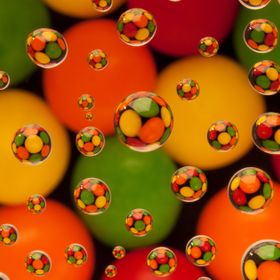

timmc
FollowThis is one of a series of photos from a saltwater aquarium that belongs to a friend.
This is one of a series of photos from a saltwater aquarium that belongs to a friend.
Read less
Read less
Views
547
Likes
Awards
Featured
Featured
Judge Favorite
Peer Award
Superb Composition
Top Choice
Absolute Masterpiece
Magnificent Capture
All Star
Outstanding Creativity
Superior Skill
Categories
Same photographer See allBehind The Lens
Discover more photos See all
Behind The Lens
Location
This photo was taken in a friends salt water aquarium. The aquarium was newly established and my friend wanted some pictures to record the progress of the creatures in his tank. I jumped at the opportunity to attempt a project where I photographed fish through the glass of an aquarium. After a little research on the subject of aquarium photography our "underwater adventure" began in a small room with a 20 gallon salt water aquarium.Time
We timed the photo shoot that produced this image early in the evening just prior to normal feeding time. We were limited to a couple of hours because the lights for the tank were set on a timer to simulate nightfall and the fish become more sedentary and would go into hiding. A lot of our time was spent waiting for the subjects to position themselves in front of a complimentary background such as anemones like the one in this photo or one of the several types of corals contained in the tank.Lighting
I used an off camera Canon Speedlight positioned to one side and above in an effort to simulate natural light filtering through the water onto the anemone fish. We shot multiple images with varying power levels set in manual on the flash until we found one that worked at the varied depths of the subjects in the tanks. As the subject we were trying to capture moved lower into the tank a higher power setting was required to provide adequate illumination.Equipment
Most images were handheld due to the nearly perpetual motion of the fish. I always take a tripod but in this instance it was not of much value. The camera I used was a Canon 5D Mark II in manual with a 100 mm 2.8L IS lens. The flash is a Canon Speedlight 600EX-RT also set in manual mode. The flash was used off camera connected with a hot shoe extension cord. My friend helped by holding the flash in position allowing me to concentrate on the photography.Inspiration
I love all types of photography and I have seen examples of aquarium photography on the internet that produced beautiful results. Having been a diver myself I had photographed reefs before with a film camera when I first got started in photography. This opportunity would allow me to control the light with a captive subject and with digital media! Awesome. My local camera club, The Beaumont Camera Club was about to have a macro photography contest and this would give me a chance to capture some images that would not be typical. I jumped at the chance and had a blast doing it. My friend now has pictures of his aquarium to show his friends and I have images to share here on Viewbug.Editing
I used Lightroom IV to process the image. Cropping and a small amount of color enhancement really made the image pop. I then exported the image to Photoshop and cleaned up the particles that showed up in the image.In my camera bag
My go to lens is is the 70-200mm 2.8L IS II coupled with a 5D Mark II camera body. I also carry a 24-70mm 2.8L and the 100mm 2.8L IS. This allows me to cover just about any situation. The flash I keep in my bad is the Canon 600EX-RT. I use a flash modifier called a Flashbender. It is invaluable for directing the light where it is most needed and reflects beautiful light. A set of Kenko extension tubes adds even more versatility to the lenses I carry. A few filters extra batteries and memory cards completes my kit.Feedback
This is a super way to practice using off camera flash and capture some great images with just a little practice. Any type of aquarium with a flat surface will work. (round aquariums with distort your image) Position your flash above and to one side of your subject to simulate natural light filtering down through the water. Your camera and flash should both be set to manual. The flash power should be set as low as possible while still allowing for a well lit subject. If the power is too high on the flash the fish will likely look blown out in areas. Camera settings should begin with an ISO around 400 to allow for a shutter speed that can help stop the motion a your subject. Turning off the filters on the tank shortly before the photo shoot will allow the suspended particulates in the water to settle. This will decrease the amount of post process clean up needed. I really enjoyed shooting and sharing these images and hope you have the opportunity to try capturing underwater images without ever getting wet.












































